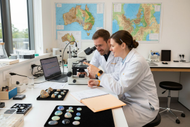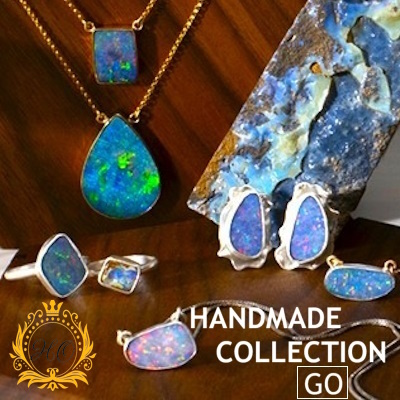What Is Opal Formation? Complete Scientific Breakdown
Posted by AOD on 22nd Oct 2025
What Is Opal Formation? Complete Scientific Breakdown
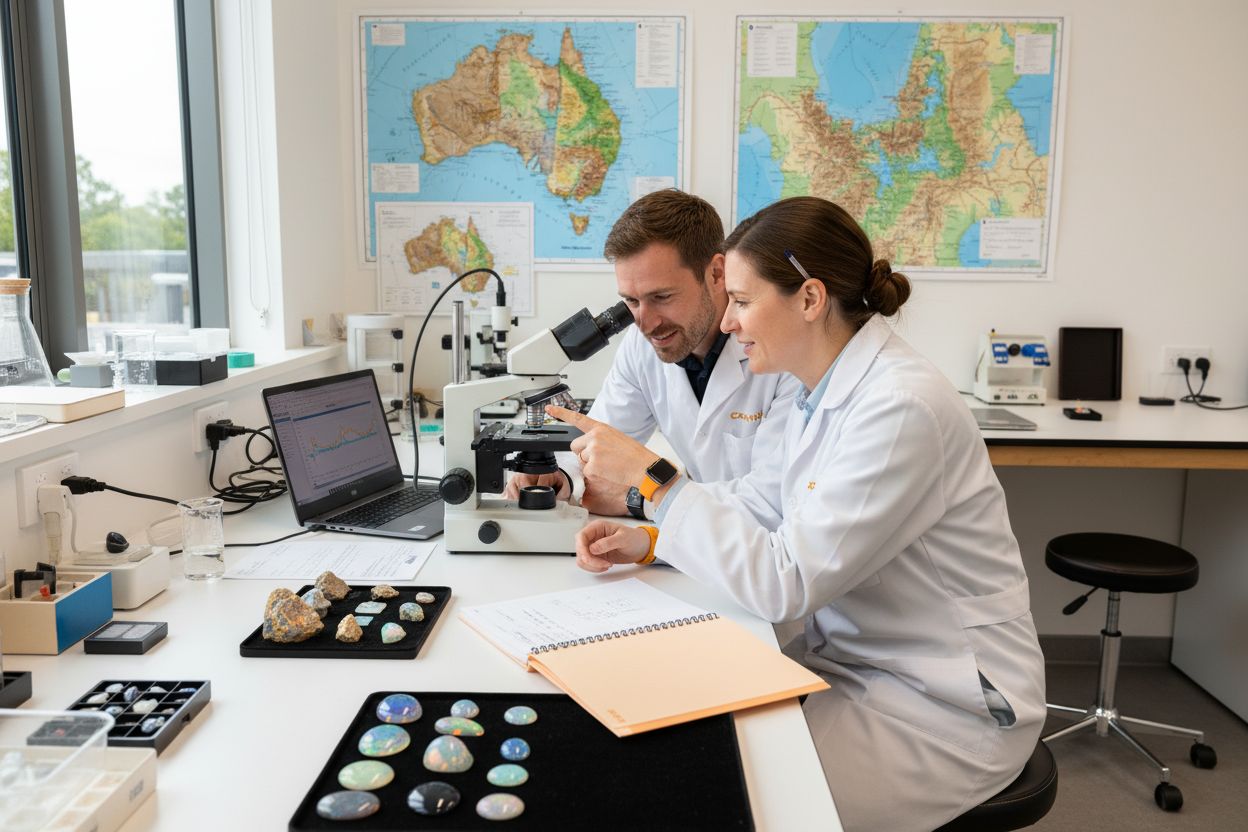
Did you know that over 95 percent of the world’s precious opal comes from Australia? These striking gems form through a rare geological dance involving silica, rainwater, and ancient rocks, resulting in their famous rainbow shimmer. The natural process behind opal creation is nothing short of astonishing, connecting deep Earth chemistry with breathtaking color. Understanding how opals form opens the door to appreciating why each stone is truly unique and cherished for its beauty and rarity.
Table of Contents
- Defining Opal Formation And Its Origins
- Geological Processes Shaping Opal Deposits
- Major Types Of Australian Opal Explained
- Key Characteristics Of Formed Opals
- Why Opal Rarity And Value Vary
Key Takeaways
| Point | Details |
|---|---|
| Opal Formation | Opal is formed through a complex geological process involving the dissolution and deposition of silica, creating its unique microstructure and color play. |
| Geological Conditions | The formation of opals is influenced by environmental factors such as rock porosity, groundwater chemistry, and temperature, contributing to their rarity and value. |
| Types of Australian Opal | Australian opals are primarily categorized into three types: white, black, and boulder, each possessing distinct characteristics sought after by collectors and jewelers. |
| Rarity and Value | The value of opals is determined by factors like silica sphere size, intensity of color play, and unique geological features, making them highly prized in the gemstone market. |
Defining Opal Formation And Its Origins
Opal is a mesmerizing gemstone born from an extraordinary geological process involving silica, water, and rock formations. Opal formation is a complex phenomenon that occurs deep within the Earth’s geological layers, transforming dissolved minerals into a stunning, iridescent gem. According to Geoscience Australia, opal emerges as a hydrated silica gemstone with a unique microstructure that creates its signature rainbow-like display.
The journey of opal begins when groundwater dissolves silica from quartz, creating a silica-rich solution that gradually deposits amorphous silica spheres in rock pores and seams. As the International Gem Society explains, this process is often influenced by seasonal changes in the water table, which contribute to the layered development of opals. In Australia, these gems typically form in Cretaceous sandstones and mudstones through deeply weathered silica entering groundwater systems.
Key stages of opal formation involve several critical processes:
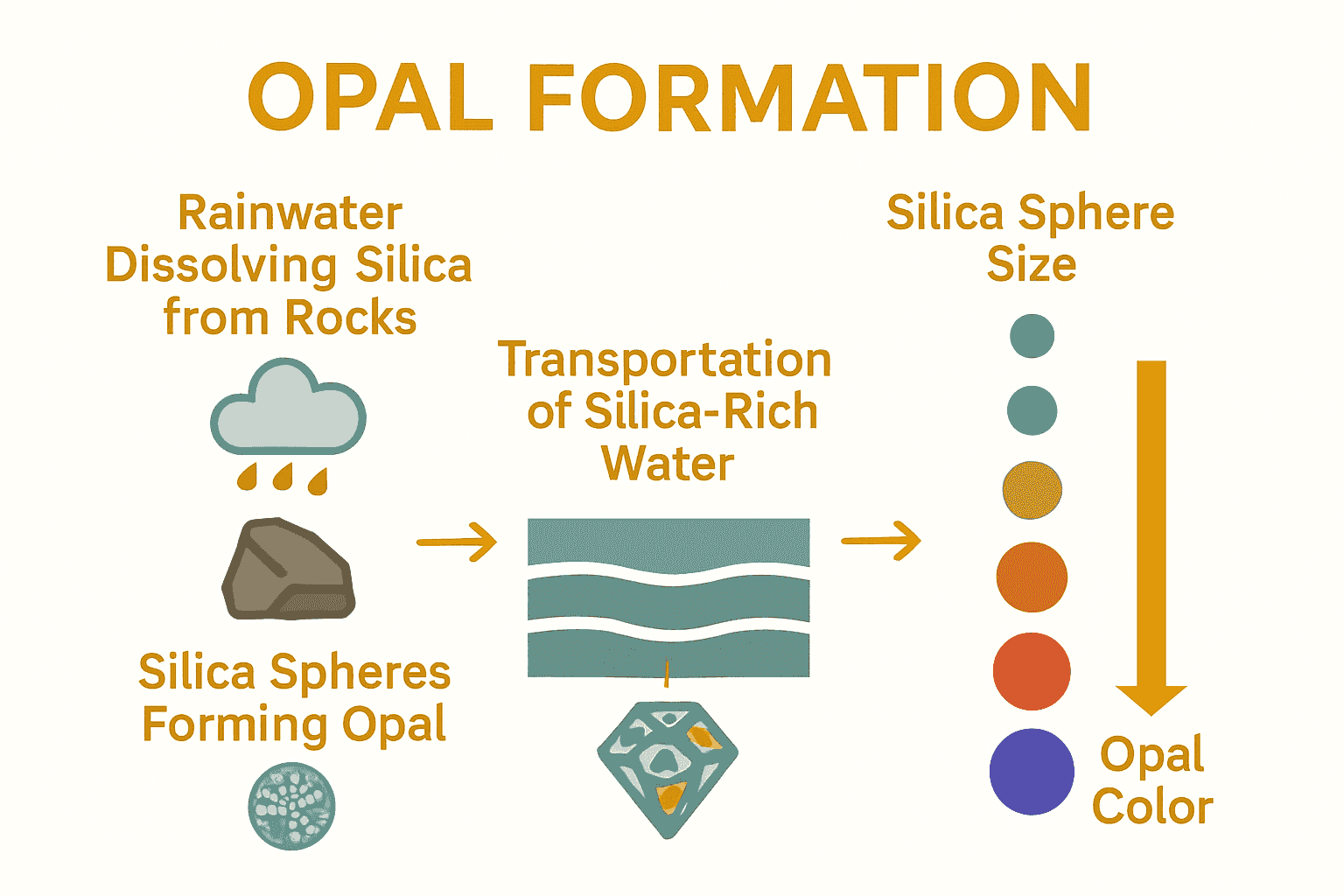
- Silica dissolution from surrounding rock
- Transportation of silica-rich solutions through geological channels
- Gradual deposition and hardening of silica spheres
- Accumulation of layers that create the gem’s distinctive play of color
The result is a remarkable gemstone with an intricate internal structure, where microscopic silica spheres arranged in precise patterns create the magical light-refracting qualities that make opals so captivating.
Geological Processes Shaping Opal Deposits
Opal deposits represent a fascinating geological narrative where complex environmental conditions converge to create these extraordinary gemstones. According to Geoscience Australia, the formation process begins with the weathering of sedimentary rocks, which releases silica into groundwater systems. This dissolved silica then migrates through geological channels, traveling along intricate fault lines and rock joints.
The transportation and deposition of silica are highly nuanced processes. Impermeable geological layers act as natural traps, capturing the silica-rich solutions and creating perfect conditions for opal crystallization. Silica sphere distribution plays a critical role in determining the gem’s characteristics, with layering and gravitational forces influencing the size and arrangement of these microscopic structures. In regions like the Griman Creek Formation in New South Wales, discontinuous clay lens beds within sandstone and claystone serve as primary zones for opal deposition.
Key geological factors influencing opal formation include:
- Rock porosity and permeability
- Groundwater chemistry
- Temperature and pressure variations
- Presence of impermeable geological barriers
- Mineral content of surrounding rock formations
Interestingly, these geological processes can sometimes preserve more than just gemstones. The Griman Creek Formation, for instance, is known for containing opalised fossils, creating a remarkable record of prehistoric life preserved within these stunning mineral formations. Learn more about the incredible geological history of opal and appreciate the intricate natural processes that create these mesmerizing gemstones.
Major Types Of Australian Opal Explained
Australian opals represent a stunning diversity of geological beauty, with each variety telling a unique story of formation and character. According to Geoscience Australia, the continent boasts three primary opal varieties that have captivated gemstone enthusiasts worldwide: white opal from Coober Pedy, black opal from Lightning Ridge, and boulder opal from Queensland. Each type possesses distinctive characteristics that make it exceptional and sought after by collectors and jewelers.
The Opal Association classifies natural opals into three fundamental types based on their structural composition. Type 1 represents solid opal in a single piece, Type 2 includes boulder opal naturally attached to host rock, and Type 3 comprises matrix opal filling pore spaces within host rock. These classifications help distinguish between precious opals with play-of-colour and common opals, which lack the mesmerizing colour display.
Key characteristics of Australian opal varieties include:
Here’s a comparison of the major types of Australian opal:
| Opal Type | Location | Background Color | Notable Features |
|---|---|---|---|
| White Opal | Coober Pedy | Light/Pale | Subtle colors High abundance |
| Black Opal | Lightning Ridge | Dark/Black | Vivid colors Highest value |
| Boulder Opal | Queensland | Ironstone backing | Unique bands Natural matrix |
- White Opal: Pale colours on a light background, predominantly found in Coober Pedy
- Black Opal: Vivid colours displayed against a dark background, iconic to Lightning Ridge
- Boulder Opal: Unique stones cut with natural ironstone backing, characteristic of Queensland deposits
Explore the fascinating world of Australian opal types and discover the incredible geological diversity that makes each opal a one-of-a-kind treasure. From the subtle elegance of white opals to the dramatic intensity of black opals, these gemstones represent nature’s most extraordinary artistic expression.
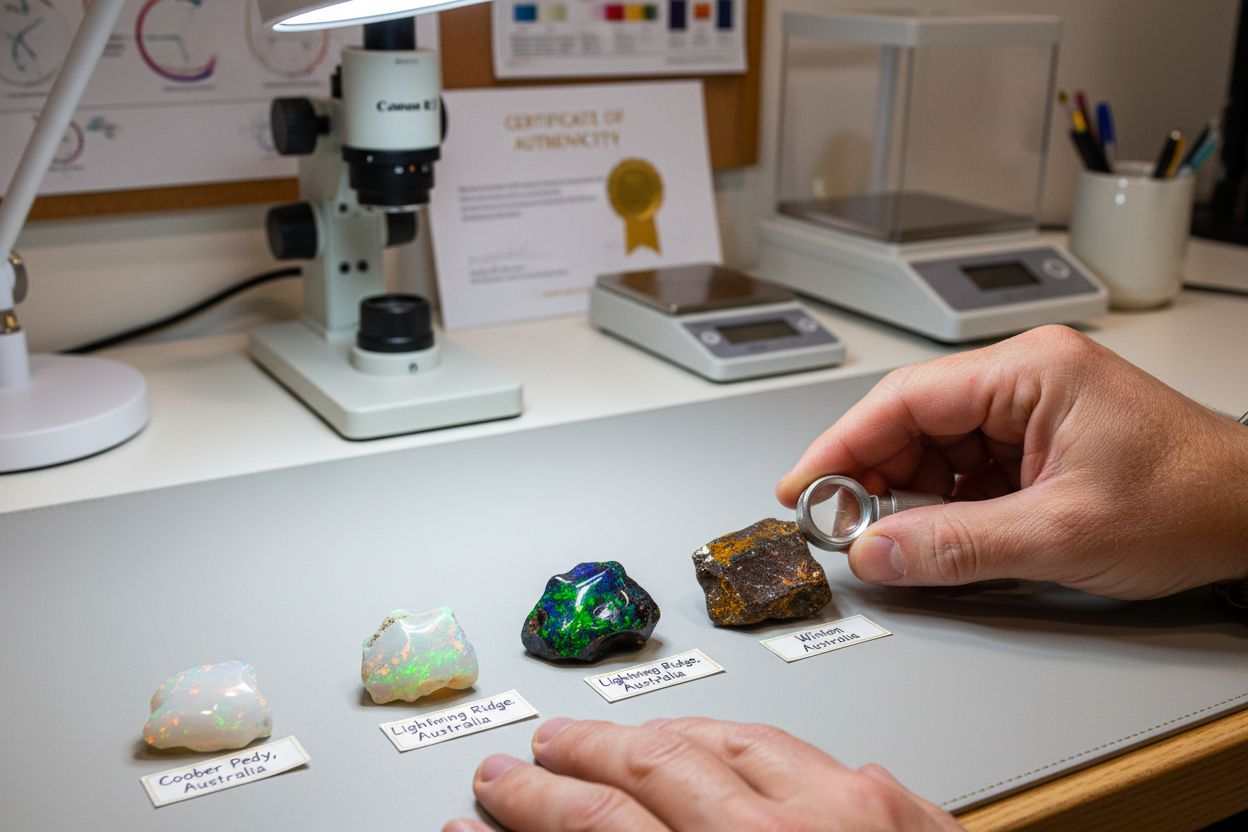
Key Characteristics Of Formed Opals
Geoscience Australia reveals that opals are far more than just beautiful gemstones—they are complex mineral structures with fascinating scientific properties. The chemical composition of opals is uniquely defined as SiO₂·nH₂O, indicating a precise combination of silica and water that creates their extraordinary optical characteristics. With a density of approximately 2.09 g/cm³ and a Mohs hardness ranging between 5.5 and 6, opals represent a delicate balance of durability and ethereal beauty.
The most captivating aspect of opals lies in their microscopic internal structure. Composed of silica spheres suspended in water, these gemstones create their signature play of color through light diffraction. Remarkably, the size of these silica spheres directly influences the color spectrum—larger spheres produce stunning red hues, while smaller spheres generate mesmerizing blue and green tones. According to comprehensive gemological research, opals can range from completely transparent to opaque, with a vitreous to waxy luster that changes dramatically depending on their specific formation conditions.
Key physical characteristics of formed opals include:
- Chemical composition of silica and water (3–10%)
- Amorphous crystal structure
- Mohs hardness between 5½–6½
- No natural cleavage planes
- Conchoidal fracture pattern
- Varying transparency levels
- Unique optical light diffraction properties
Discover how to identify authentic opals and appreciate the intricate geological marvel that makes each stone a miniature universe of color and light. From the microscopic dance of silica spheres to the breathtaking color displays, opals remain nature’s most enchanting geological artwork.
Why Opal Rarity And Value Vary
Geoscience Australia reveals that opal’s extraordinary value stems from its remarkably complex formation process and exceptional optical characteristics. The rarity of opals is determined by several intricate factors, with the most prized specimens featuring unique color patterns and precise silica sphere configurations that create stunning light interactions. Red play-of-colour opals, for instance, are particularly rare because they require larger silica spheres—a geological condition that occurs infrequently.
The geological landscape of opal formation dramatically influences their value. Black opals are especially coveted due to their dark background, which dramatically enhances color contrast and creates more vibrant visual displays. According to geological research, Australian opals stand out globally because of their highly uniform and well-packed silica spheres, producing intense and stable play-of-colour that collectors and jewelers prize. Unique occurrences like opalised fossils and rare opal pseudomorphs further elevate certain specimens’ worth.
Key factors determining opal rarity and value include:
- Size and uniformity of silica spheres
- Intensity of color play
- Background tone (black, white, boulder)
- Presence of rare patterns like Harlequin or Rolling Flash
- Geological origin and formation conditions
- Presence of unique geological features
Explore the fascinating world of opal valuation and discover why these gemstones are so much more than simple stones—they are geological miracles that capture light, history, and extraordinary natural complexity in a single, breathtaking moment.
Discover the Science Behind Your Next Australian Opal Treasure
Understanding the intricate process of opal formation reveals why each stone carries a story millions of years in the making. If you are captivated by opals’ unique play of color and their geological rarity, you will appreciate how the size and arrangement of silica spheres shape every gem’s beauty. This knowledge underscores the value of owning an authentic opal that reflects not only natural artistry but also the Earth’s remarkable history.

Bring these scientific marvels into your collection with confidence by exploring genuine, ethically sourced Australian opals at Australian Opal Direct. Whether you seek the luminous black opal from Lightning Ridge or the delicate white opal from Coober Pedy, our exclusive selection honors the complex formations described in the article and ensures authenticity backed by direct relationships with miners. Delve into our collection today and own a gem where ancient geology meets exquisite craftsmanship.
Frequently Asked Questions
What is opal formation?
Opal formation is the geological process in which silica and water combine to create the iridescent gemstone known as opal. It involves the dissolution of silica from rock, followed by transportation through groundwater, and deposition into rock pores where it hardens into opal.
What are the key stages of opal formation?
The key stages of opal formation include the dissolution of silica from surrounding rock, the transportation of silica-rich solutions through geological channels, the deposition and hardening of silica spheres, and the accumulation of layers that create the distinctive play of color in opals.
What factors influence the characteristics of opals?
Factors that influence the characteristics of opals include rock porosity and permeability, groundwater chemistry, temperature and pressure variations, and the presence of impermeable geological barriers which affect the distribution and size of silica spheres within the opal.
How do the types of opal differ?
Australian opals can be categorized into three primary types based on their structural composition: Type 1 (solid opal), Type 2 (boulder opal attached to host rock), and Type 3 (matrix opal filling the pore spaces of the host rock). Each type has unique features and varying aesthetic qualities.
